#kedleston hall
Text
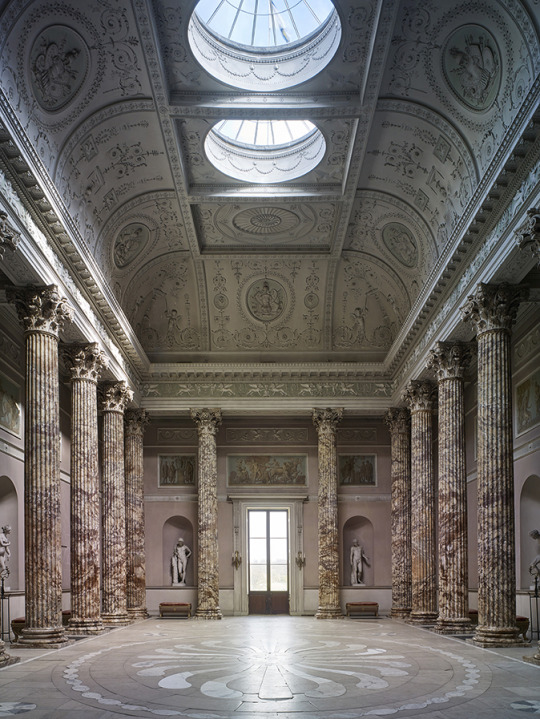
Kedleston Hall, Kedleston, Derbyshire, United Kingdom,
The marble hall with its elaborate plasterwork executed to the designs of Robert Adam. The fluting of the alabaster columns was carried out in situ.
Photo: Paul Highnam/©Country Life
#art#design#architecture#history#luxury lifestyle#luxury house#luxury homes#kedleston hall#united kingdom#hall#neo-classical#luxuryhouses#robert adam#derbyshire#paul highman#countrylife
1K notes
·
View notes
Photo
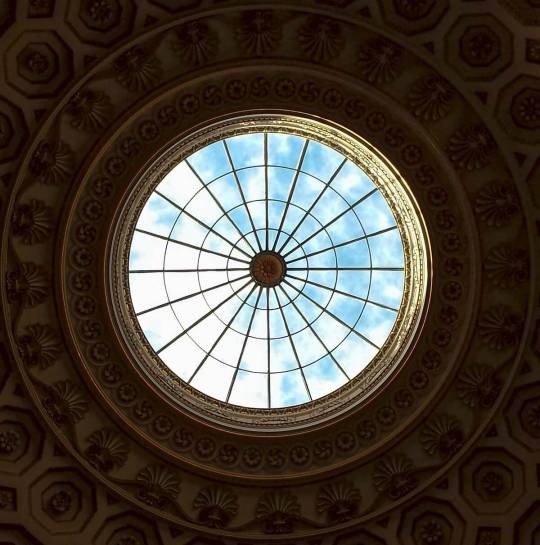
Kedleston Hall Glass Oculus via The Best Historic Castles in the Peak District
197 notes
·
View notes
Text

Kedleston Hall - ENGLAND
#kedleston hall#national trust#derby#derbyshire#england#inglaterra#united kingdom#reino unido#europe#europa
46 notes
·
View notes
Text
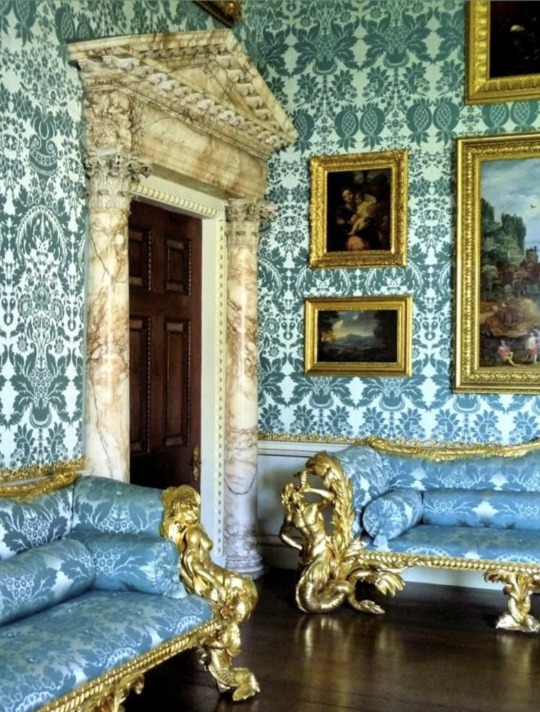
11 notes
·
View notes
Photo

Aleksander Rzewuski, Portrait of Lady Cynthia Mosley, 1924.
Lady Cynthia Blanche Mosley (1898-1933), nicknamed "Cimmie", was a British politician of Anglo-American parentage and the first wife of the British Fascist and New Party politician Sir Oswald Mosley, who was formerly a Member of Parliament in both the Conservative and Labour parties. (x)
#aleksander rzewuski#1924#lady cynthia mosley#cimmie#sir oswald mosley#lady cynthia blanche mosley#alexander rzewuski#alex rzewuski#lady cynthia#Cynthia Blanche Curzon#kedleston hall#oswald mosley#cimmie mosley#portrait#1920s#20s#jazz age#british politicians#british politician
12 notes
·
View notes
Text

Today's Flickr photo with the most hits: the marble entrance hall, Kedleston - from the rotunda.
0 notes
Text
LONDON FRIENDS!
I have a favour to ask.
In my research for an upcoming video I have hit a slight roadblock. I reached out to the British Library hoping to get a few copies of some records pertaining to Kedleston Hall and they were very quick and lovely in their replies, providing me with photographs of the finding aid. However, after seeing several records that I would love to stick my nose into and request digital copies of, I hit a roadblock. Late last year, the British Library was struck by a cyber-attack that has left them reeling and trying to recover, meaning that they could not accommodate my request for these records. As far as I have been able to tell, these records are still accessible in-person, however I am back in Canada and it's a bit of a commute.
I can finish this video WITHOUT these records, but as a dedicated researcher, I want to follow every rabbit hole as far as I can before admitting defeat. Which is why I thought I would put out the call here to see if anyone would be willing to go in-person to the reading room and snap some photos on their phone for me. I only need the photos to be clear enough to read and I have a little money set aside to throw a little cash to whomever would be willing to help me out.
I have attached images of the finding aid and underlined the bits I'd like in red. For further clarity:
Item 1: 1383 MSS Eur F 112/7333
Item 2: 1385 MSS Eur F 112/735
Item 3: 1355 MSS Eur F 112/705
Item 4: 1356 MSS Eur F 112/706

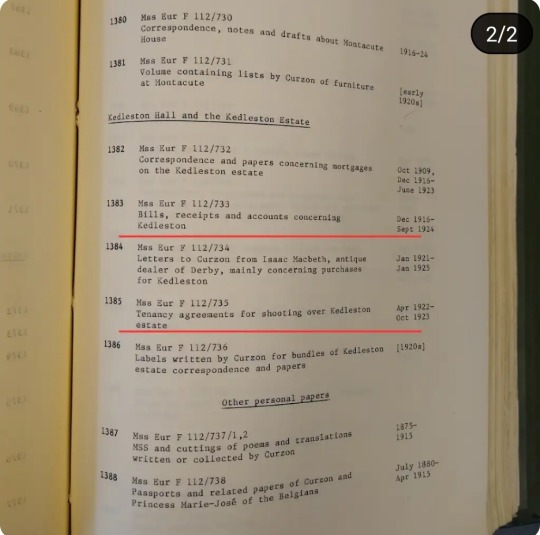
These items are from the Curzon Papers and are available through the Asian and African Studies Reference Services.
Here is some info on the reading rooms and how to access the collection:
https://www.bl.uk/research/#reading-rooms
You can email me at: [email protected] if you are willing to help me out or comment below!
If this doesn't work, that is okay! If nothing else I got to tease you all with an upcoming project :)
14 notes
·
View notes
Text

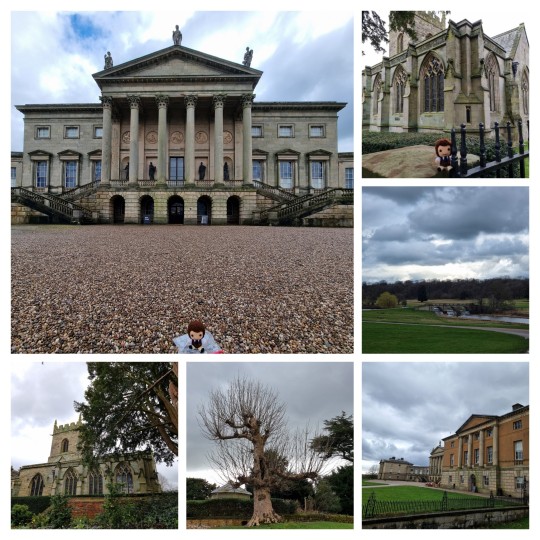
Thomas's grand tour day 2:
We braved the wind, rain and snow to visit the incredible Arbor Low Stone Circle. Unsurprisingly, we were the only people there so we got this wonderful site all to ourselves which was absolutely incredible. Such a beautiful, ancient and serene place.
Afterwards, we went to Kedleston Hall, admired a particularly Entish looking tree, had a wonderful lunch and explored the church and grounds a little. Thomas thought it was very nice 😉
13 notes
·
View notes
Text

Mary Leiter, Lady Curzon, wearing a 1903 gown, The Peacock Dress", by Jean-Philippe Worth (House of Worth) • Portrait by William Logsdail (English,1859-1944) • 1909

The Peacock Dress today behind glass at the Curzon family seat in of Kedleston Hall in Derbyshire, England. Via/ Flickr
Lord and Lady Curzon (who was American) would end up in India, then a part of the English Empire. Lord Curzon was made Viceroy of India, which made his wife the Vicereine- the highest title that a woman in India could hold at the time.
To celebrate the 1902 coronation of King Edward VII, Lord Curzon decided to hold a grand party in honor of the new monarch in 1903, known as the Delhi Durbar. For the occasion, Mary was to have the most incredible gown created which would showcase the talents of Indian artisans, a personal passion of the Vicereine. However, the dress was to be designed and sewn by famed French couturier, House of Worth. The Edwardian gown was made from fabric painstakingly embroidered in India, which was then sent to France to be fashioned before being sent back to India. What makes this gown so unbelievably unique is that every part of the gown and train is embroidered in alternating peacock feather patterns, earning it the nickname of the "Peacock Dress". The decoration comes from metal threads expertly affixed to the fabric. The gown is also embellished with glass beads, rhinestones, and shimmering iridescent green beetle wings. The gown is so covered in embroidery that it weighs 10 pounds, more than the weight of a small load of laundry!
The Resplendent Outfit: The outrageous, extravagant, often humorous, and sometimes beautiful outfits worn by the subjects of old portraits.
Outrageous ? (It depends on where you sit.)
Extravagant ✅️
Humorous. ❎️
Beautiful. ✅️
#portrait#art#painting#royal portraits#english artist#peacock dress#early 20th century fashion#house of worth#historical fashion#the resplendent outfit#william logsdail#edwardian fashion
19 notes
·
View notes
Text
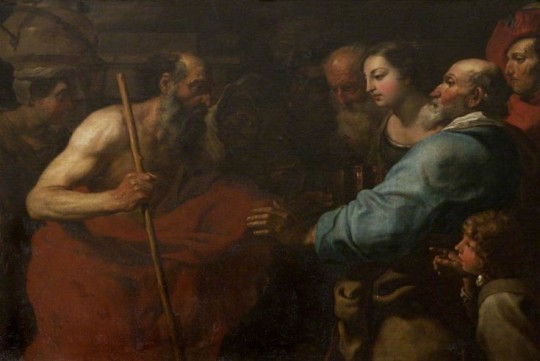
Diogenes with His Lantern by Gioacchino Assereto (1600-1649). Kedleston Hall and Eastern Museum, oil on canvas 114,5x162,5 cm
22 notes
·
View notes
Photo

The Four Seasons: Spring – Triumph of Venus
William Hamilton (1751–1801) (attributed to)
National Trust, Kedleston Hall and Eastern Museum
50 notes
·
View notes
Text
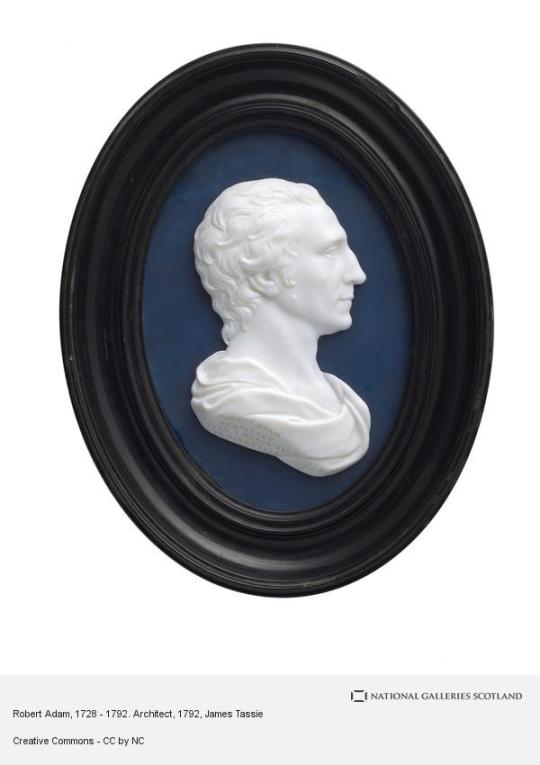



On July 3rd 1728 Robert Adam, the Scottish architect, furniture and interior designer, was born in Kircaldy
Robert Adam was the son of a Stonemason, William a stonemason who took up architecture, the family moved to Edinburgh when Robert was eleven, where his father had become the most popular architect in Scotland.
He attended The Royal High School in Edinburgh and was noted as having a "feeble constitution" His education continued at The University of Edinburgh where his studies were interrupted in 1745 due to wee bit of upheaval when the Jacobite Army of BPC arrived and occupied the City. Added to this he fell seriously ill at the end on the year and failed to graduate. On his recovery from illness in 1746, he joined his elder brother John as apprentice to his father. He assisted his father on projects such as the building of Inveraray Castle and the continuing extensions of Hopetoun House, his father died in 1748 and Robert and his brother ran the family firm now called Adam Brothers.
In 1750 Robert decided he needed to witness the architecture around Europe and departed on his "Grand Tour" in France and Italy. He studied widely the classical Roman ruins and increased his drawing skills.
On his return he opened his own architectural practice in London and soon became established as one of the most fashionable designers amongst the High Society. His Practice was timely as there was a renewed interest in England for all things Classical and the “Palladian Movement” (Based on the proportional architecture of the Italian Andrea Palladio) had just firmly taken hold. Adam was no slavish Palladian however and his Style has become known as “neoclassical”. He adapted and developed ancient styles rather than simply copying them.
As Adam was more often than not asked to renovate existing buildings much of his work was concerned with interiors. He was obsessive over every detail and designed everything himself down to plasterwork and fireplaces. He moved beyond Roman Style and was influenced by Greek, Byzantine and Italian Baroque design.
Adams work in Scotland include the Royal Exchange, in Edinburgh's High Street on the Royal Mile, The Royal Infirmary, Glasgow, Register House, Edinburgh and The Old College quadrangle at the University of Edinburgh.
In England he designed my favourite, Pulteney Bridge in Bath, as well as Kedleston Hall and Marlborough House, Brighton.
I think I have featured most of these buildings previously in posts so would like to showcase some of the meticulous interior work that Robert Adam was known for. As I've said before I am not a fan of the country houses, the places that reek of wealth, give me a ruined castle any day, but you have to admire the work that went into these interiors.
As seen in the first picture, Kenwood Library was added to Kenwood house in London by Adam between 1767-69 and you have to admit, it is beautiful as is The Marble Hall at Kedleston Hall, both these are open to visitors through English Heritage and National Trust respectively. Back in Scotland I couldn't finish this post without mentioning Red Drawing Dining room at Hopetoun House, made famous by the fictional Duke of Sandringham in TV Series Outlander.
13 notes
·
View notes
Text
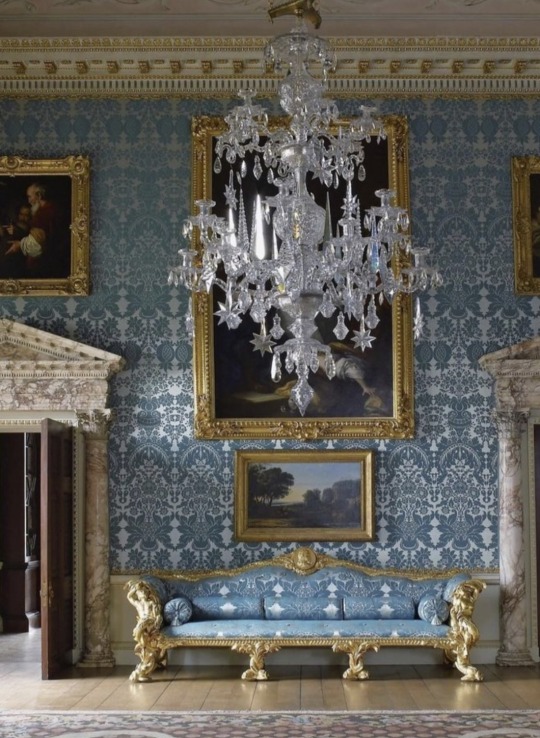
#El Kedleston Hall es una casa solariega inglesa en Kedleston# Derbyshire#Reino Unifo.#Hoy en día es propiedad de la Fundación Nacional para Lugares de Interés Histórico o Belleza Natural.
15 notes
·
View notes
Text
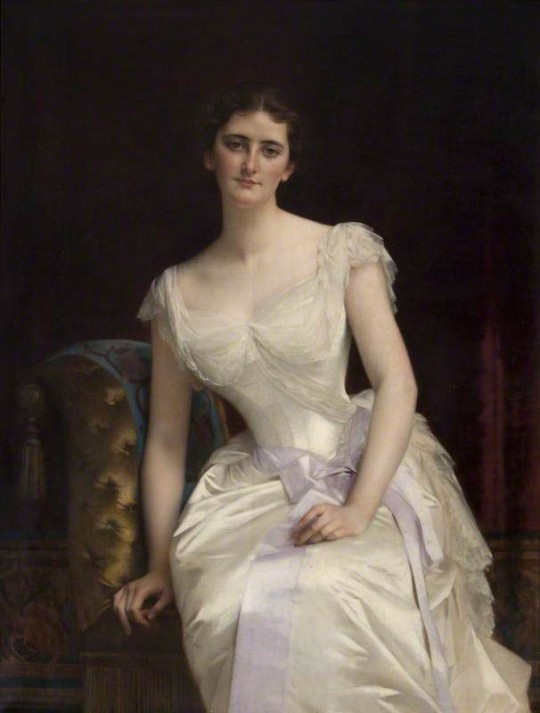
Alexander Cabanel • (French, 1823-1829) • Portrait of Victoria Leiter • 1887 • Kedleston Hall, Derbyshire, England (National Trust for Places of Historic Interest, United Kingdom)
#alexandre cabanel#women in artworks#women in white#la robe blanche#art#painting#white dress#19th century art#women in paintings#portrait#portraiture#academic art#academic painting#french painter#achromaticaddict
9 notes
·
View notes
Photo

Today’s Flickr photo with the most hits: the fireplace in the Music Room, at Kedleston Hall.
1 note
·
View note
Photo

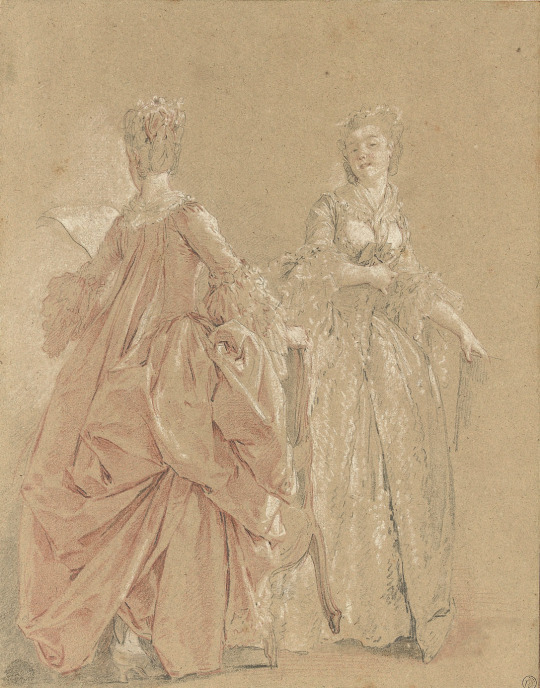





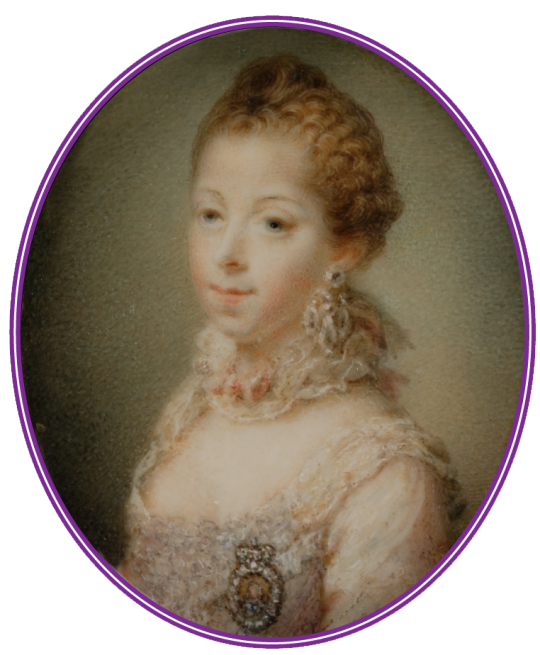
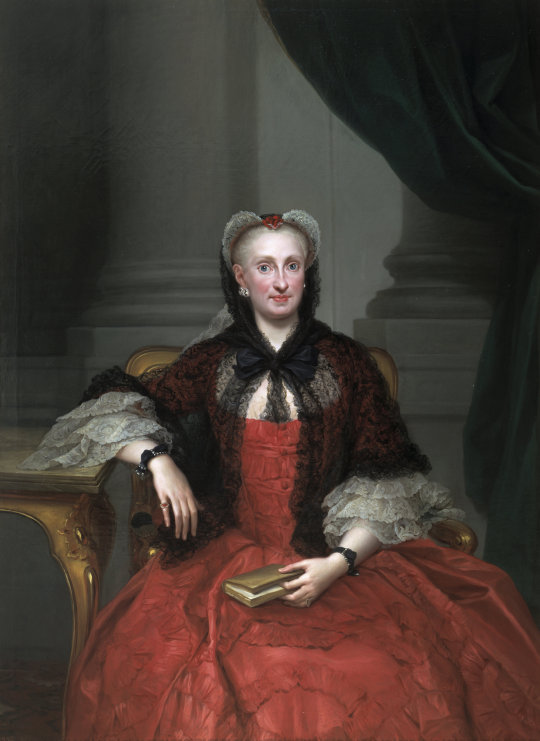
It’s 1761 -
1761 The first Lord and Lady Scarsdale walking in the grounds of Kedleston Hall by Nathaniel Hone (Kedleston Hall -Derbyshire, UK). From titam.tumblr.com; size doubled and image made sharper 1140X1600 @300 282kj.
1761 Two ladies in elegant costume - study for 'The Harpsichord Lesson' by Jean-Michel Moreau (auctioned by Christie's). From their Web site (1087X1364 @72 662kj.
ca. 1761 Maria Elisabeth Otth geb. Stettler by ? (location ?). From liveinternet.ru/users/svetlana_kb/post457431702/; adjusted height to fit screen 997X1300 @96 244kj.
1761 Lady Anstruther by Sir Joshua Reynolds (Tate Collection - London, UK). From tate.org.uk/documents/1642/2020_pecuniary_legacy.pdf; erased spots w Pshop 3703X4783 @150 2.9Mj.
ca. 1761 Countess Anna Eleanora Lowenheim by ? (auctioned by Bukowskis). From liveinternet.ru/users/5559804/post354456165 1668X2048 @72 1.5Mj.
1761 Lady Elizabeth Keppel by Sir Joshua Reynolds (Woburn Abbey - Woburn, Bedfordshire, UK). From wikijp.org/wiki/Peter_Toms_%28painter%29 1280X1882 @72 496kj.
1761 Sophie Charlotte Königin von Großbritannien und Irland, Kurfürstin bzw. Königin von Hannover by Jeremiah Meyer (Tansey Miniatures Foundation collection, Bomann-Museum - Celle, Niedersachsen, Germany). From tansey-miniatures.com/sammlung 76.2X924 @72 865kj.
1761 Maria Amalia de Sajonia by Anton Rafael Mengs (Museo del Prado - Madrid, Spain). From liveinternet.ru/users/marylai/post292168318 2222X3051 @72 1.6Mj.
#1761 fashion#Georgian fashion#Louis XV fashion#Rococo fashion#Lord and Lady Scarsdale#Nathaniel Hone#outdoor dress#Jean-Michel Moreau#sacque back#robe à la française#Maria Elisabeth Otth#stomacher#bow#Lady Anstruther#Joshua Reynolds#Anna Eleanora Lowenheim#Elizabeth Keppel#shoes#Queen Charlotte#Jeremiah Meyer#miniature#Maria Amalia of Saxony#Anton Rafael Mengs
11 notes
·
View notes